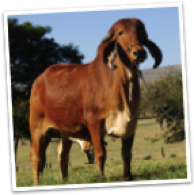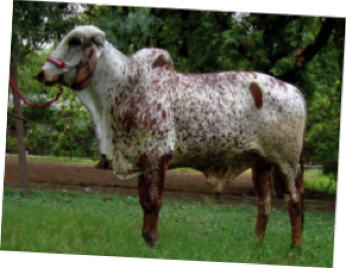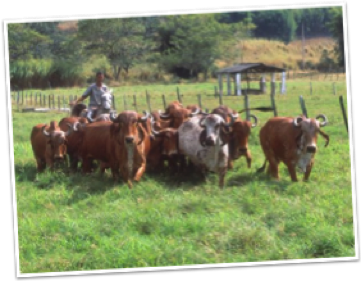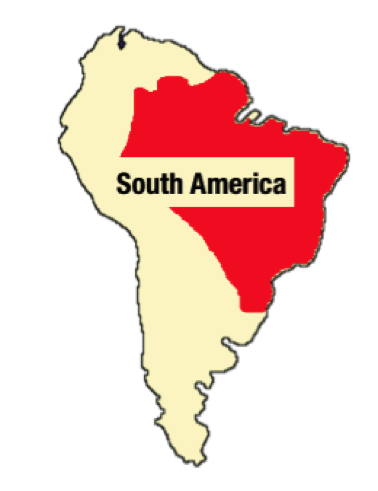
Draft
For centuries cattle have been used as draft animals. Even in today’s industrialized societies, zebus are used individually or as a team to pull carts for both commerce and transportation. Their calm nature helps them to work safely on crowded streets and through traffic. Zebus are not only used in populated areas, but are also commonly found in rural farming communities. They are well suited for agricultural work as they maintain a steady pace, and are not readily affected by hot or humid conditions.
Similar to their situation compared to beef cattle, Indu are not the highest quantity milk producers. The Indu-Brazilian’s ability to stay healthy also allows them to produce their milk when other cattle would not. In India, where cattle are considered to be sacred, zebu cattle are used primarily for milk and draft purposes.
About Me
Indu-Brazilian zebus were developed in Brazil by cross-breeding 3 different breeds of cattle from India. An adult male reaches over 6 feet tall, and weighs around 2,500 pounds. They can be red, black, gray, white, or even speckled in color. Both the male and female Indus have up and back sweeping, thick horns. Bull Indus have larger, more pronounced foreheads. Indu-Brazilians are most recognizable by their low hanging long ears. Their large ears help to regulate their body temperature by releasing body heat. Zebu cattle have loose hanging skin on their neck called a dewlap, and a large hump on the top of their shoulders. Though the Indu grows to be very large, when hand-raised they are generally docile and quite affectionate.
Some of rodeo’s bucking bulls were originally bred by combining the Indu-Brazilian Zebu with other European breeds.
The Indu-Brazilian Zebu has adapted to tropical climates by developing thick skin that helps them resist parasites and disease. This allows them to survive in regions where other cattle would struggle. In 1849, the first Indu was imported into the United States and became the basis for Brahma cattle.









Fast Facts
Name: Indu-Brazilian Zebu
Scientific: Bos primigenius indicus
Family: Bovidae
Relatives: Gir, Brahman, Miniature Zebu
Environment: Sub-Tropical
Origin: Brazil, United States
Life-span: 20 years
Size: 2,500 lbs

There are 75 known breeds of zebus found throughout Southeast Asia, Africa, India, and most recently Brazil and the United States.


Snapshot
1. May have the longest ears of any cattle
2. Disease and parasite resistant
3. Can stand over 6 feet tall

Products
• Milk
• Hide
• Meat
• Dung for fuel
• Manure
Meat & Milk
Indu-Brazilian Zebus are preferred for beef in Brazil and other tropical climates because they maintain condition better than other domestic breeds. Zebus have a lean carcass with a high cut-ability. The zebu does not produce as high a quantity of meat as other domestic cattle. Their ability to maintain good condition in climates where other cattle would not makes them ideal beef cattle in hot and humid regions. They are often cross-bred with domestic cattle to increase body size, and milk production.


